
Nutshell: If Juan Vazquez was ejected from Maryland’s tracks, why is he entering horses elsewhere? The answer points to the strengths and weaknesses of ejection itself.
by Frank Vespe
When the Maryland Jockey Club asked trainer Juan C. Vazquez and his former assistant Hector Garcia in February to remove their horses from the company’s property and find someplace else to race them, that, many observers thought, was that.
They wouldn’t see Vazquez — a trainer who’s developed something of a “ne’er do well” reputation for both medication violations and physical altercations — or Garcia any longer.
And yet, just a month later, Vazquez appeared back in the entries: two runners at Charles Town last night and another at Parx Racing over the weekend.
The response of the internet, at least, was swift, and predictable: “Ridiculous,” said one commenter. “A traveling circus,” lamented another.
“This idiot should be banned from ever training again,” said a third.
What happened?
In June, Vazquez approached jockey Trevor McCarthy near the Delaware Park winner’s circle and initiated a confrontation that quickly became a fight.
When the dust had settled, Vazquez found himself arrested and, later, the recipient of a six-month suspension from the Delaware Thoroughbred Racing Commission — a suspension that all other racing states typically honor.
While serving his time, Vazquez turned his operation over to assistant Hector Garcia. In about a six-week period of December and January, Garcia-trained horses running at Laurel Park accrued three positive tests for the banned steroid stanozolol and a fourth for the sedative xylazine. The quartet of positives earned him about a year in penalties from the Maryland Racing Commission, which employed the new multiple medication violation points system, resulting in a significantly longer penalty.
That was the last straw. The Stronach Group, owners of the Maryland Jockey Club, which owns Laurel Park and Pimlico, exercised its right to exclude people from its property and sent the pair packing.
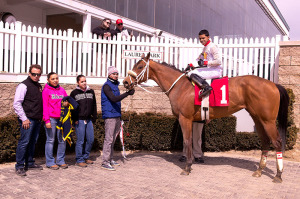
“It’s the company policy,” said MJC General Manager Sal Sinatra. “We’re trying to maintain the integrity here.”
The ability to eject people is powerful; neither Vazquez nor Garcia nor their horses are allowed on MJC grounds unless and until the company decides to allow them back.
Yet it is also based on the company’s own internal assessment of the situation — as opposed to an agreed-upon rulebook — which may differ from another track’s read of it.
Moreover — and here’s the rub — it is also localized.
The MJC’s decision, in other words, may or may not carry any weight with other tracks. Some may follow suit (as Penn National reportedly has); others may decide not to.
Regardless of the MJC’s action, Garcia will be out of action until his suspension expires. The suspension of Vazquez, however, is already up; it’s up to other tracks how to respond.
Though the new multiple medications violation policy imposes additional penalties on repeat offenders — attempting to fix what was widely perceived to be a loophole that allowed repeat offenders to get off with scant punishment — that system only began last year. And it focuses on medication issues — not, for example, fighting.
Sinatra portrayed the MJC as, in essence, putting together the pieces of the story in a way that the state’s Racing Commission could not. “Commissions look at this on a case-by-case basis,” he said, as opposed to a more holistic view. Vazquez had been suspended before for medication issues (as well as for fighting) but not since the imposition of the new system.
Yet the use of ejections — a power all racetracks use at one time or another — is in many ways an informal one that tracks to some extent keep to themselves.
“We typically don’t inform other tracks, except sometimes our sister properties,” says Erich Zimny, Vice President for Racing Operations at Hollywood Casino at Charles Town Races.
Both Sinatra and Parx Racing’s Director of Racing Sam Elliott echoed that, saying that they typically do not take steps to inform other tracks of ejections. Elliott said that he has done so at certain times in the past, such as when, while at Suffolk Downs, he had informed other tracks about individuals who had violated his track’s anti-slaughter policies.
All said they would answer questions when asked by other tracks’ racing officials.
Of course, the Vazquez ejection was relatively high-profile, and Zimny and Elliott both were aware of it.
Zimny said staff from Charles Town had spoken to MJC personnel, and Elliott said that he personally had spoken with the Stronach Group’s Chief Operating Officer Tim Ritvo about the ejection. What they do with that information is entirely up to them.
“We’re going to make our decision based on what we think,” Zimny said.
“Everyone has that seminal moment in their career [where they either straighten up or are gone],” agreed Elliott. “I believe in redemption.”
Elliott says that he does not consider Vazquez’s presence a “horse welfare issue,” adding that “you could point to any number of people” with medication violations.
Though for the most part public reaction focused on Vazquez’s reputation for medication violations, it’s notable that Vazquez’s recently expired suspension was not for a medication violation but for his fight with McCarthy — a difference perhaps obscure to many racing fans, who often paint individuals with a “good guy” or “bad guy” brush and see penalties handed out as resulting from their innate qualities rather than specific violations.
What’s more, Elliott points out that Vazquez has served the suspension meted out to him and been restored, as the rulings say, “to good standing.”
“If a guy has served his suspensions, then he’s done with it,” Elliott said.
Still, both tracks are hedging their bets. Neither awarded stalls to Vazquez; Elliott called that “too hot to the touch.”
Ultimately, a track’s ejection is generally a blunter and less effective instrument than a Racing Commission suspension. Hector Garcia, for example, with his year in Commission-imposed suspensions, won’t be training anywhere until that term is up; Vazquez, meanwhile, will live in a patchwork world in which some doors are open to him, and some are closed.
Which isn’t to say that ejections are without effect. Both tracks will be keeping a close eye on Vazquez, and both indicated that they would implement a policy substantially stricter than “three strikes and you’re out.”
“I know one thing,” said Elliott. “If I have a problem with him, it won’t be for long.”
[author] [author_image timthumb=’on’]http://www.theracingbiz.com/wp-content/uploads/2014/01/fvandfred2.jpg[/author_image] [author_info]Frank Vespe, the founder of The Racing Biz, has owned, bought, sold, claimed, and written about horses, in varying combinations, for a decade.[/author_info] [/author]



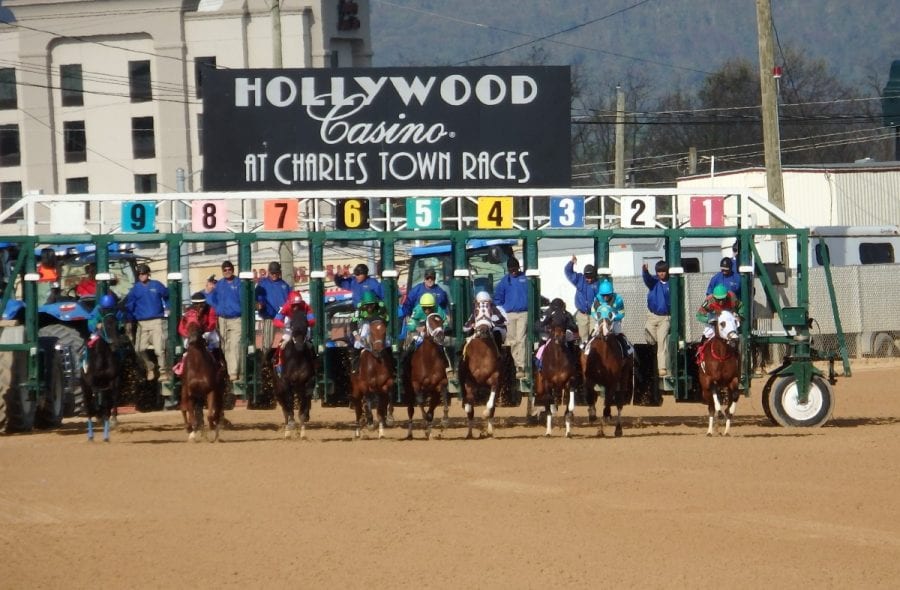
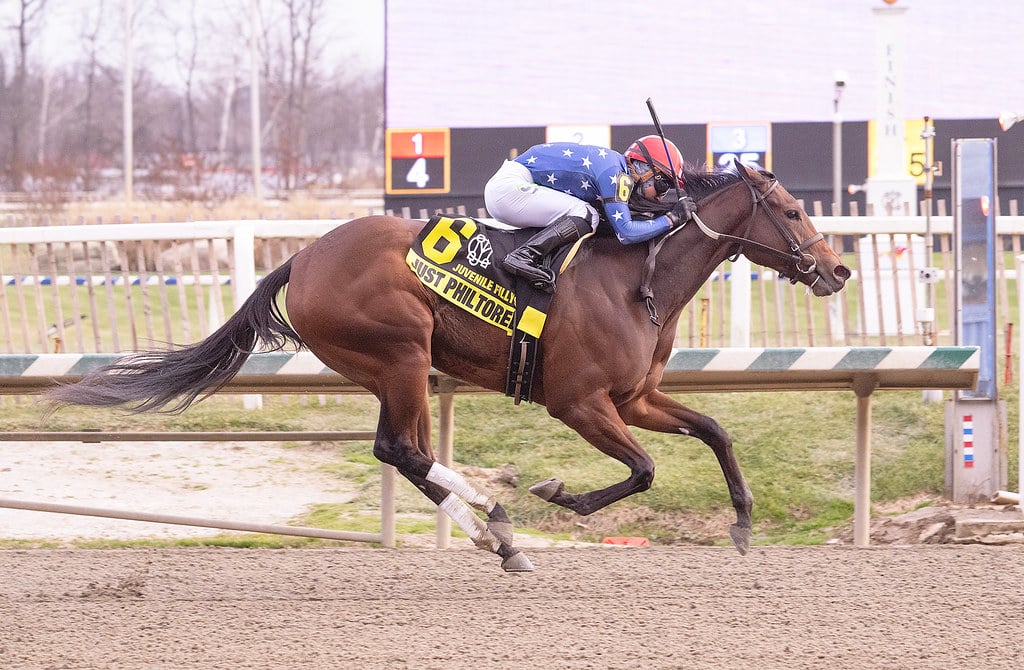
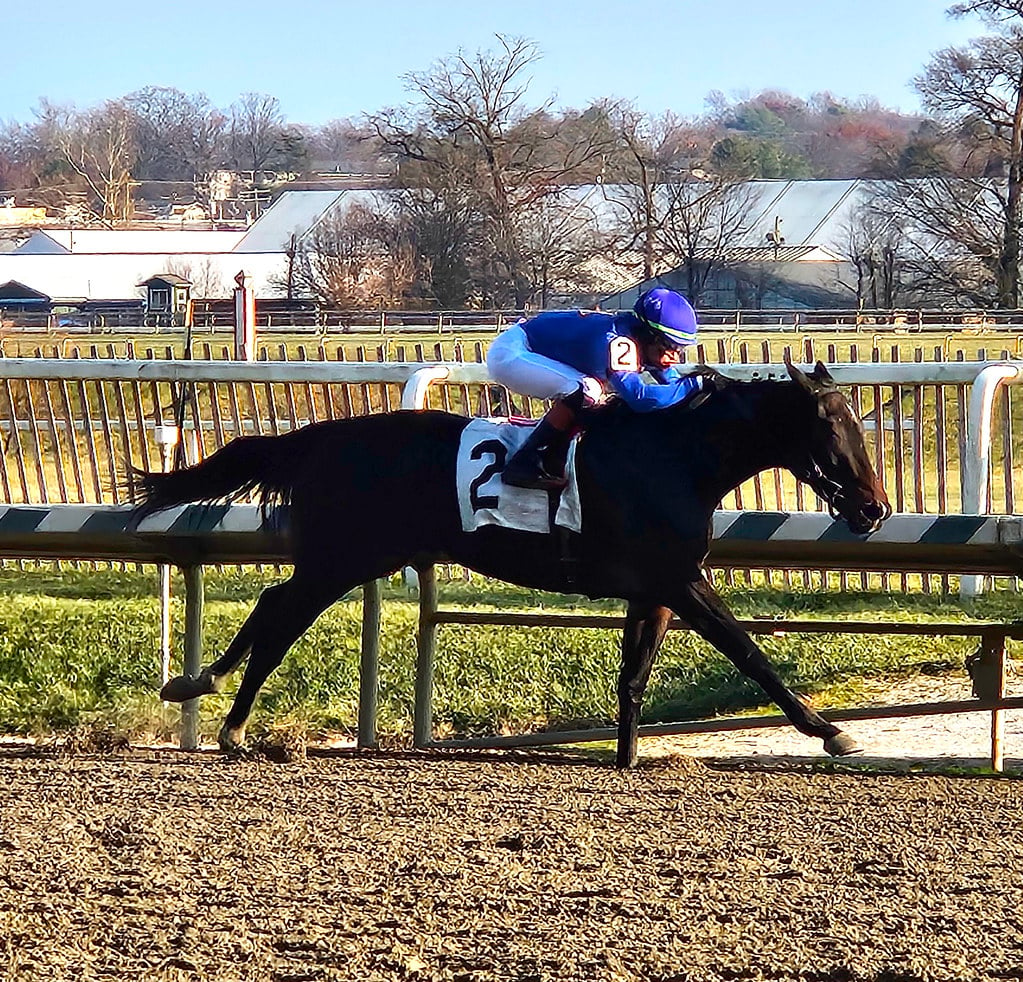
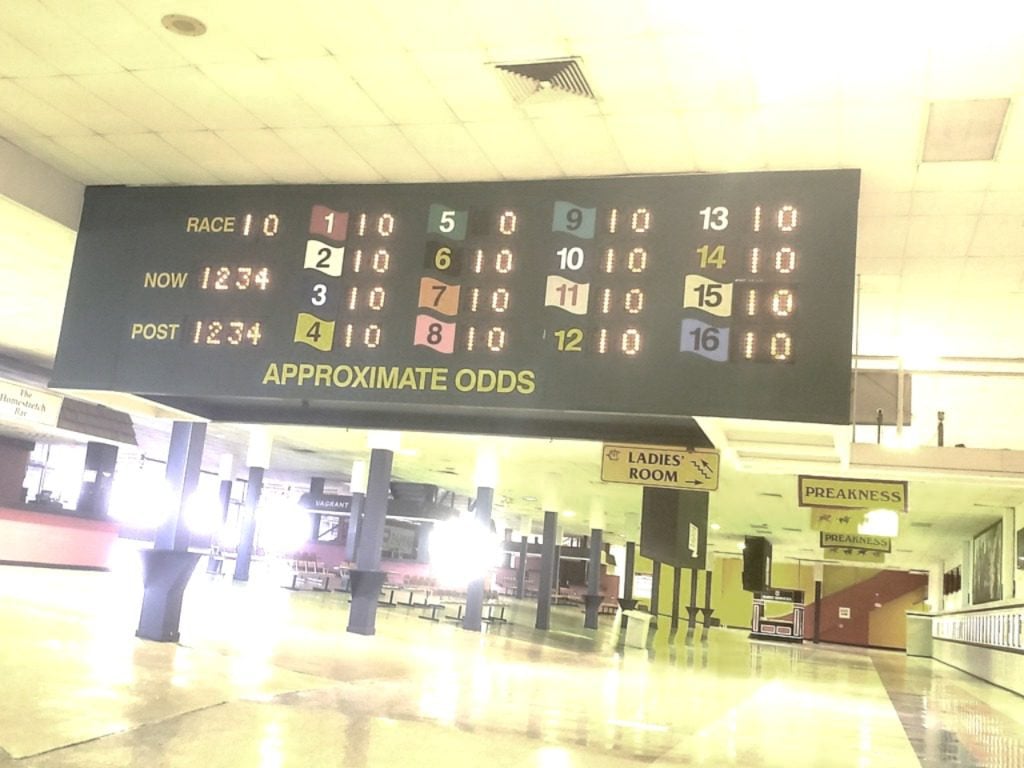

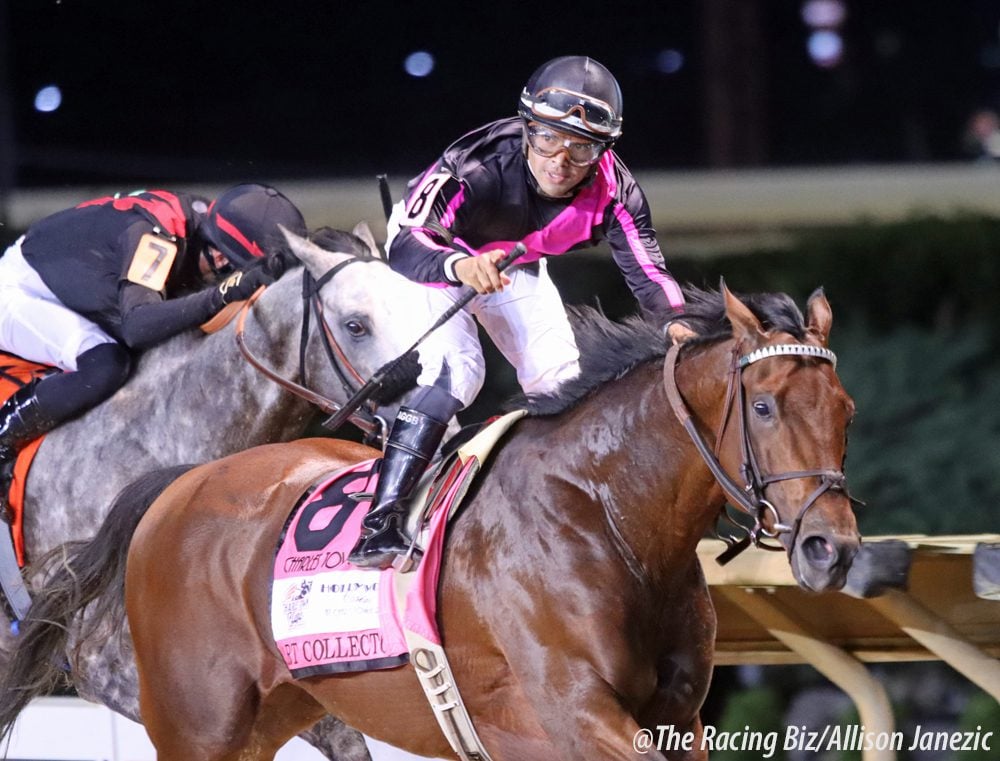
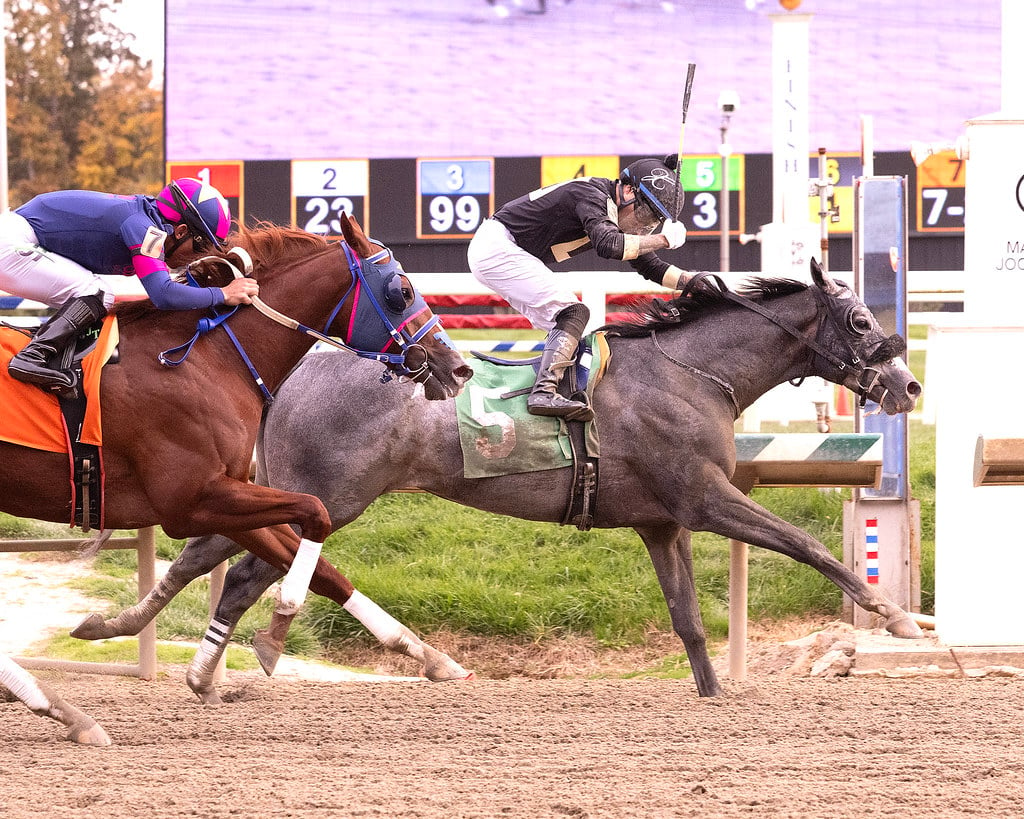

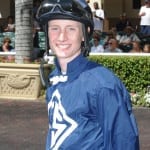
Guest
13th Mar 2015I sure hope you guys welcome back Julio Cartagena, who is training in his daughters name, from his about 3 year suspension for a BANNED drug with as much vigor and press as you have Juan Vazquez.
Maryland Owner
13th Mar 2015Interesting to note the difference between how the Maryland Jockey Club has treated Latino trainers like Vazquez, (whose last drug positive was several years ago), with other trainers who don’t have Hispanic names. Not to defend in any way what Vazquez may have done, but the “crack down” me laugh, because many trainers who have public records of doing worse than him are racing all the time at Pimlico and Laurel.
If you get caught with needles, if you have multiple drug positives, if you get disciplined for having unprescribed medications laying around the barn – yeah, you might get some days, but you are still welcome to stable and/or race in Maryland. As long as you have an Anglo name. Maybe Juan Vazquez should consider changing his name to “Ferris Lake.” He’d possibly be treated much better by the MJC.
The Biz
13th Mar 2015Thanks for checking in, Owner. Interesting (though unsubstantiated) take. One point of clarification: Vazquez had a DMSO positive in October 2014. He’s also been judged to be the aggressor in two separate fights warranting lengthy suspensions, one on MJC grounds. Those facts are also part of what the MJC was considering in rendering this decision.
Maryland Owner
13th Mar 2015You are right about the DMSO in October 2014. I had looked at his record when he was ejected by MJC last month, and the online database says this overage was posted on 2/25/15. I regret the error.
About the fight with Trevor McCarthy? What trainer hasn’t wanted to clock a jock once in a while? I know Trevor and I think he is a great young kid, but he’s also shown he can ride like a dangerous cowboy (and has gotten days for it too). That was why Vazquez took a swing at him in Delaware last year, being upset about how Trevor had ridden in two races on the same card and with both incidents involving Vazquez’s horses. It’s not like Vazquez is some kind of sociopath who randomly beats up people.
Honestly, what bothers me most about this whole thing is the arbitrary and capricious nature of what the MJC is doing. Vazquez isn’t barred because our disciplinary system, with its fixed procedures and processes determined him to be excluded. No, he’s out because the MJC management woke up one day and decided they want him gone. Others with MUCH worse records are still welcome at Laurel and Pimlico.
When there’s no accountability and the decision is so draconian, it casts a pall over the sport for me. No standards, no rules, no review. Like they did with Vazquez, MJC can decide one day they don’t like me criticizing them on the internet and then – POOF – I can’t run in the state anymore. And they decide whether they will choose – or not choose – to call up their buds who run other race tracks and – wink, wink – inform them about pain in the ass people who ought to be collectively shunned.
The Biz
13th Mar 2015Owner – re: McCarthy – that of course is part of the problem… every trainer has wanted to clock a jock. How many have actually done so in front of the fans immediately after a race? Wanting to clock a jockey and doing it, and doing it in front of the fans (few as there are), are different issues. And that was not Juan’s first fighting problem. (I’m also, parenthetically, not sure you can find others with ‘MUCH worse records” – he’s had plenty of issues over the years, including at least one other suspension meted out last year).
Having said that, I don’t entirely disagree, and that was part of the point we were trying to raise in the article: that an ejection is both less forceful and more arbitrary than a suspension because in the end it’s based not on the application of specific rules to specific circumstances but on the company’s feeling that “enough is enough.” Even if the company’s right in any given circumstance, it’s not an action you want to see used very often. You’d rather have agreed upon rules that address the compilation of sins (and not just med overages) than leave it to a racetrack operator to make the call.
Photofin
29th May 2015When I started in this business back in the early 1970’s, there was no uncertainty that participating in the sport was a privilege, and that in many ways it was a “good ol’ boys CLUB” that expected you to behave with a certain civility and decorum…or you could be looking for a new livelihood. Did that work perfectly? Hardly. Were there instances where they might harass you based upon the inconvenience of your successes keeping their buddies from being successful…sometimes, but it was rare. It is a very slippery slope, and since then I observed what Guest and Maryland Owner are speaking about existing continuously. Racing became so much more about “who you know” than “what you know” and how much money you could throw at a Vet truck, that I left, along with many I knew. And here we are. One thing about the business, it is never dull watching the various shows in that circus….One thing to keep in mind, FAIRNESS can only exist if there is EQUALITY in consequences…that is often the rub.